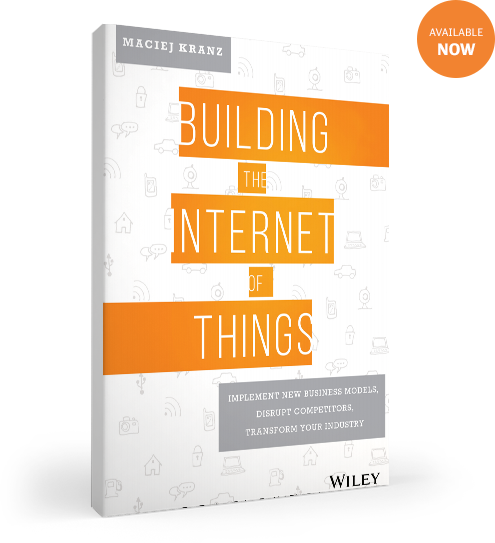Of course not. Nobody wants their project to fail. But, as with any transition, especially one as far-reaching as the Internet of Things (IoT), we’ve seen some disappointments—and even a few truly spectacular failures.
For example, “smart parking” solutions are a much-touted component of smart and connected cities. However, the first generation of vehicle parking solutions relied on immature technology—sensors inserted into the street surface—that proved to be expensive to install and easily damaged by cars, weather, and even vandals. However, once this initial approach was replaced by video sensing (which was more reliable and cheaper to deploy) automated parking solutions started to gain traction.

Sometimes IoT initiatives fail simply because of poor communication. A coalition of partners spent two years working with an oil & gas company on a connected refinery solution based on outdoor Wi-Fi. The project was extremely challenging, but the team succeeded. To their surprise, the solution was actually never implemented because the business units—the actual customers—had never bought into the project and chose not to take it live. Oops.
Having spent the last several weeks talking about my recipe for IoT success, it seems only fitting to discuss some common mistakes and how to avoid them. So here is a summation of issues and challenges I have seen while working with people across the globe on their IoT implementations:
- Starting with technology instead of business opportunity. The primary goal of IoT is to solve business problems, not to excite tech geeks with a cool project. So focus on the business problem and the technology will follow.
- Approaching a solution in isolation without integrating it with business processes. If you don’t examine existing workflows and integrate your IoT solution with them, you’ll see diminished ROI, or even a complete lack of business benefit.
- Leading with connected devices instead of data and apps. Applications and data analytics drive the need for device connectivity, not vice versa.
- Neglecting a strategic and long-term focus on change management. Implementing IoT will change the way your business operates, so you can bet there will be resistance. Prepare for an enduring effort to combat it.
- Confusing tactics with strategic vision. Think big, but start small. Start with a low-risk tactical project with clear benefits, then—as your expertise and support grow—choose more ambitious projects within your overall strategic direction.
- Designing IoT solutions without a proper security foundation. Integrate security into your implementation from the start, and make it everybody’s job.
- Trying to do it alone. IoT is a team sport. Assemble an ecosystem of partners from inside and outside your company, and make sure they can work together well.
- Implementing single-vendor custom solutions. Insist that suppliers open up their architectures, embrace open standards, and adopt a co-development model. But don’t make it a custom solution—insist on an open platform that can be adopted by the industry.
- Taking a grass-roots-only approach. You must have executive support at the highest levels. After all, you’re re-engineering the company. You need C-suite sponsorship.
- Underestimating the challenge of legacy systems. Pursue an aggressive but thoughtful plan to replace existing proprietary systems with open standards wherever possible.
- Failing to communicate. Communicate more than you think is necessary. Broadcast both successes and lessons learned from failure.
- Underestimating the power of existing relationships. Many industries have well-established ecosystems and relationships. Some of these players are eager to be change agents, and some will resist. Seek out openness.
- Betting on immature technologies. New technologies bring big promises, and can be a big gamble. Implement them in phases, and learn and share with your peers.
- Compromising on interoperability. This mistake will doom your project to a very short life and cost you a bundle.
- Not managing risk vectors properly. Be thoughtful about how many new variables you’re planning to introduce in an IoT project and stage them carefully.
- Falling for hype instead of building a business case. Build a solid business justification for your IoT project. Continue experimenting, learning and benchmarking your results until you find a compelling ROI for your first small IoT project.
I can assure you that you’ll make plenty of mistakes in your IoT journey. But if you spot them early, you’ll be able to recover from and correct them. Let’s look at another example from the oil & gas industry. A company decided to install advanced process control (APC) systems in its refineries, but it did it one location at a time. All well and good. However, when they proceeded to integrate all refineries into a single synchronized system, they discovered that the individual APC implementations were incompatible with each other. A fatal mistake? No. But it took a lot of time, money and effort to go back and implement a standardized architecture.
Yes, IoT projects do fail. But by avoiding these common mistakes you’ll help ensure that yours won’t be among the casualties.
Next week we’ll look at the role of service providers in the IoT ecosystem.
This article was originally published on Cisco Innovation Blog

Available Now
Building the Internet of Things by Maciej Kranz provides front-line business decision makers with a practical handbook for capitalizing on this latest transformation. Focusing on the business implications of Internet of Things (IoT), this book describes the sheer impact, spread, and opportunities arising every day, and how business leaders can implement IoT today to realize tangible business advantages.